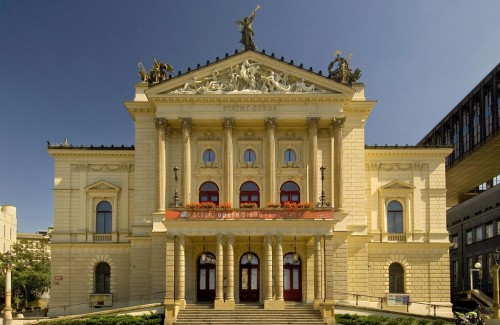
Opened -
Capacity -
Architect -
Style -
State Opera Prague - Formerly known as Smetana Theatre. State Opera Prague - Formerly known as Smetana Theatre.
Built between 1885-87 by the city’s German minority in response to the cultural challenge represented by the Czech National Theatre, it was originally called the Neues Deutches Theater. Designed by the Viennese architects Fellner and Helmer who were prolific builders of opera houses of this type, its style is essentially Neo-Renaissance with an auditorium that is light and spacious and painted red, cream and gold. There is an elaborately painted ceiling that is quite captivating especially during dull productions, and sculpted decorations on the roof by the Viennese painter Friedl.
The first season began in 1888 with an important event – the visit of Angelo Neumann’s touring company for a performance of Die Meistersinger. The ex-baritone turned impresario succeeded in taking Wagner to the masses by performing this group for the express purpose of giving Wagner and travelling to all the major centers of Europe including St. Petersburg. This began an important tradition of German-language opera directed by an impressive list of musical directors, including Gustav Mahler (1885), Otto Klemperer (1907-10), Alexander Zemlinsky (1911-1927); the champion of Schonberg he premiered Erwatung in this theatre in 1924) and George Szell (11926-36).
At the end of the Second World War, the house changed its name to the Great Opera House of the 5th of May”, then to the Grand Theatre, during the communistic era it was called the Smetana Theatre and finally after the cold war was over, it was called the State Opera.
From 1973 when the house re-opened after an extensive period of restoration, the company has alternated between Slavic and German repertoire with less emphasis on Italian and French works. Dvorak, Smetana, Tchaikovsky, Mussorgsky, Wagner and Mozart are the principal beneficiaries of this opera house.

